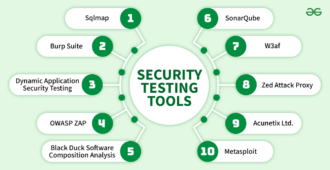Do and Don’t in Software Testing
A software tester’s job has become difficult as of late. Many new tools and technologies have entered the software testing market. To harness the true power of these latest advances, a software engineer must keep learning to develop their skill set.
Technologies such as AI, ML, and test automation have changed the entire demographic of software testing. To stay relevant, a software tester must follow specific instructions, or they might make many mistakes during the software testing process. Here is a list of some Dos and don’ts that a software tester should never forget during testing.
Here are some Do and Don’t in Software Testing
Do’s
Keep Innovating and learning—Technology has been moving at a fast pace. Using the same old methods to test technology and software applications is counterproductive now. Software testers must keep up-to-date on the latest tools and testing methods. This knowledge will allow them to adapt to the new.
Create a plan and stick to it- A software testing engineer has to learn how to create a detailed testing plan that covers all the critical points. This plan will speed up your QA efforts, as everyone in the team will work towards a common goal. However, to envisage such a plan, a software tester needs to know specific details to help create an effective strategy. Listed below are some of the details that a software tester must acquire before coming up with an effective plan:
- Document the type of test that needs to be performed
- Features that are and aren’t a part of the release
- A few features and changes have been added to the software
Understand all the external frameworks- The application will acquire information from different centralized servers. A thorough understanding of such external frameworks will help your software testing efforts.
Detect bugs and gauge their severity: All bugs and vulnerabilities found during testing should be appropriately documented. This allows teams to check whether the bugs have been resolved after testing. These bugs should also be categorized according to the severity of the threat they pose to the software. This will let the development team know which bugs must be handled expediently.
Gain a basic knowledge of testing environments- Gone are the days when a software tester just had to wait after asking for deployment. A tester should know CI tools to create the best test scripts. Software testers should now know how to achieve digital virtualization and orchestrate servers using various tools. This might seem like a predicament, but it’s not. Because a software tester does not need to dive deep into the workings of these tools, a general understanding of how they work is enough.
Don’ts
Don’t create redundant tests- When you devise a test case, it is done taking into account many aspects of software testing. Such as the initial changes in UI/UX after the software launch and future updates. Creating new tests every time a new update will only drain resources that could’ve been used in other aspects of the business. Instead, develop practical tests that can be used multiple times.
Don’t strive for perfection: Sometimes, a tester might strive for perfection and concentrate on non-critical areas. This practice is inconsequential and increases the product’s time to market. A tester should put themselves in their client’s shoes and keep the testing process concise.
Don’t treat external training as the end-all- Many organizations hire outside help to train their employees. Although this is a fruitful practice, the employees often rely solely on this outside help. Software testers should be curious and have the drive to improve their skill set regardless of any help from their organization. This drive will enable software testers to hone their skills and not rely on outsiders to provide them with the knowledge.
Don’t neglect manual testing: After the advent of automation testing, software testers have started treating manual testing as a middle child. An effective testing strategy involves both manual and automated testing. Automation testing was developed to reduce a man’s time to perform repetitive tasks. Manual testers are still needed to add creativity to the mix. Implementing a strategy that involves both is the key to high productivity and practical delivery.
Conclusion
The practices involved in different organizations’ software testing services have evolved after the arrival of tools and technologies such as test automation, AI, and ML. This evolution in testing has changed a tester’s responsibilities. These’s and don’ts will help software testers eradicate mistakes, allowing them to deliver proficient, high-quality work.

















